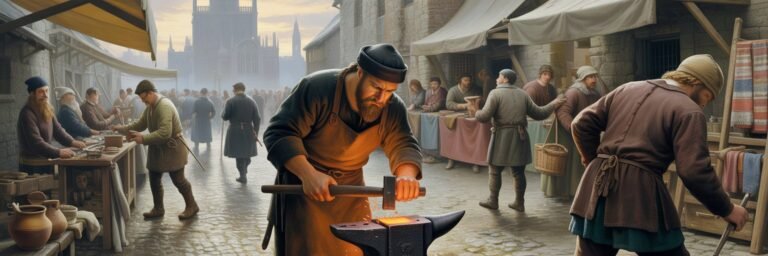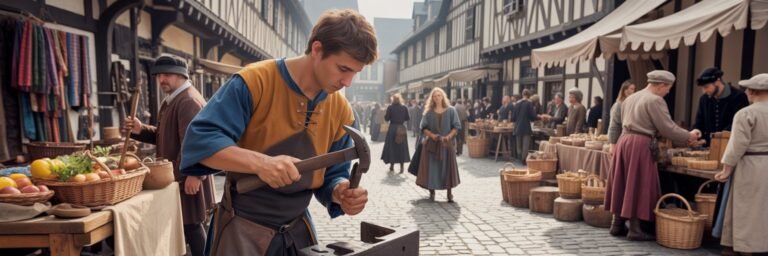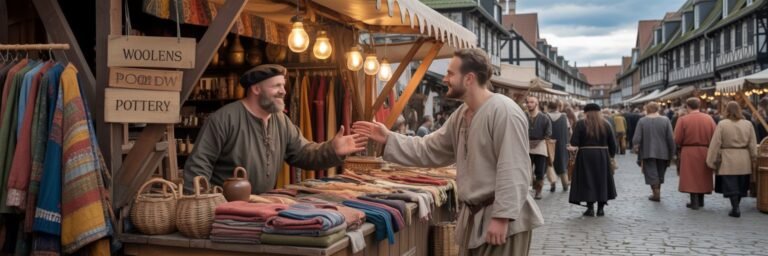INTRODUCTION
The Middle Ages is a period enshrined in popular imagination, characterized by towering castles, warlike knights, and devout holy orders. But this epoch of European history didn’t abruptly cease; it disintegrated gradually with a complex blend of fatal circumstances. The fall of Medieval Europe is a vast, intricate narrative that has continued to captivate the attention of historians and codify European identity. This article will untangle the myriad threads that contributed to the end of the Middle Ages, examining the cataclysms that shook the foundations of medieval society and brought forth the Renaissance.
HISTORICAL BACKGROUND
The Middle Ages date from the 5th to the 15th century, a time that bore witness to the rise and fall of numerous empires, the growth of the Church’s influence, and the development of a chivalric code among nobility. At the apex of the medieval period, around the 13th century, Europe was marked by rural societies, hierarchy, divine monarchy, and an integral religious ethos. Yet, beneath this surface tranquility, change loomed.
Following centuries of relative prosperity and population growth, Europe faced a series of both internal and external pressures that initiated its steady decline. In order to fully comprehend the complexity of medieval Europe’s collapse, it’s crucial to explore these several converging crises—political instability, religious discord, economic depression, and the devastating Black Death, as well as the Hundred Years War.
THEORIES AND INTERPRETATIONS
Multiple theories and interpretations have emerged over the centuries to explain the end of the Middle Ages, ranging from economic destabilization, and political reforms, to social changes, and the ravages of disease. Renowned historian, Johan Huizinga, depicted the late Middle Ages as a period of decline – a “waning” downmarked by pessimism, decadence, and a general disillusionment with the old world order.
From a socio-economic standpoint, scholars like R.H. Tawney identify the burgeoning capitalism and the migration from rural areas to swelling urban centers as key instigators in the dissolution of the medieval societal structure. These seismic shifts allowed for an increasingly literate middle class to disrupt the feudal system in place.
MYSTERIES AND CONTROVERSIES
While many theories provide insight into the eventual collapse of Medieval Europe, numerous controversies and debates persist. The precise role the Black Death played, claiming millions of lives in the 14th century, is always a point of argument. Some historians argue that the plague expedited the downfall, exacerbating social unrest and hastening economic decline. However, others contend the disease acted more as a catalyst for changes already underway.
The contentious issue of the Church’s role also features prominently. While it’s undeniable the Church experienced both a plummeting influence and fractured authority, crediting it with a central role in the fall of Medieval Europe is a divisive thesis—opinions diverge on whether this was a cause or simply a byproduct of the wider societal transformations occurring.
SYMBOLISM AND CULTURAL SIGNIFICANCE
The fall of Medieval Europe is rife with symbolism—an era of chivalry supplanted by newfound values such as humanism, innovation, and individuality. The Gutenberg Printing Press, a hallmark of the era, exemplifies this transition: a paradigm-shifting invention that made knowledge more accessible, effectively eroding the Church’s monopoly on literacy and heralding the era of mass communication.
Early Renaissance artists like Giotto and DuChamp brought new forms of observation and perspective to their craft, revolutionizing visual arts and allegorically capturing the spirit of a time where traditional norms were being challenged, a world on the brink of a new epoch.
MODERN INVESTIGATIONS
Modern historical research hasn’t been satisfied with a singular sweeping narrative explaining the fall of Medieval Europe, leaning towards a more multifaceted approach instead. Investigations into primary documents, archaeological data, and even climate science have yielded fresh perspectives on this tumultuous era.
Methods like dendrochronology, the science of tree-ring dating, provide insights into the climate conditions of the time, shedding light on how changing agricultural yields might’ve impacted societies. Furthermore, genomic studies allowing for comprehensive analysis of Black Death victims lend gravity to the disease’s potency, one certainly capable of contributing to the era’s decline.
LEGACY AND CONCLUSION
The fall of Medieval Europe was neither sudden nor was it a descent into societal oblivion. Instead, it was a period of profound transformation that presaged the birth of modern Europe. Its legacy resides not only in the drama of its decline but also in the emergent period of rebirth that followed— the Renaissance.
This sweeping historical period illustrates the clash between tradition and progress, between dogmatism and dissent, and between the trappings of the past and the promise of the future. It serves to remind us that civilizations may falter and eras may extinguish, but the march of history is a relentless drive towards change and reinvention. The fall of Medieval Europe was, ultimately, less a story of the end, but rather a prologue to a new beginning.






